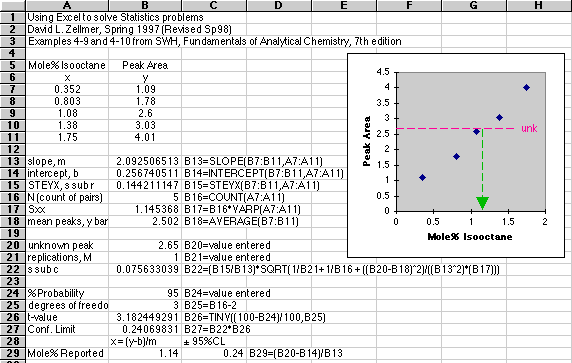Example 4-9 from Skoog, West and Holler 7th Edition
Computing the Concentration Error from a Working Curve
©David L. Zellmer, Ph.D.
Department of Chemistry
California State University, Fresno
Example 4-9 from Skoog, West and Holler 7th Edition |

Last Updated: February 16, 1998